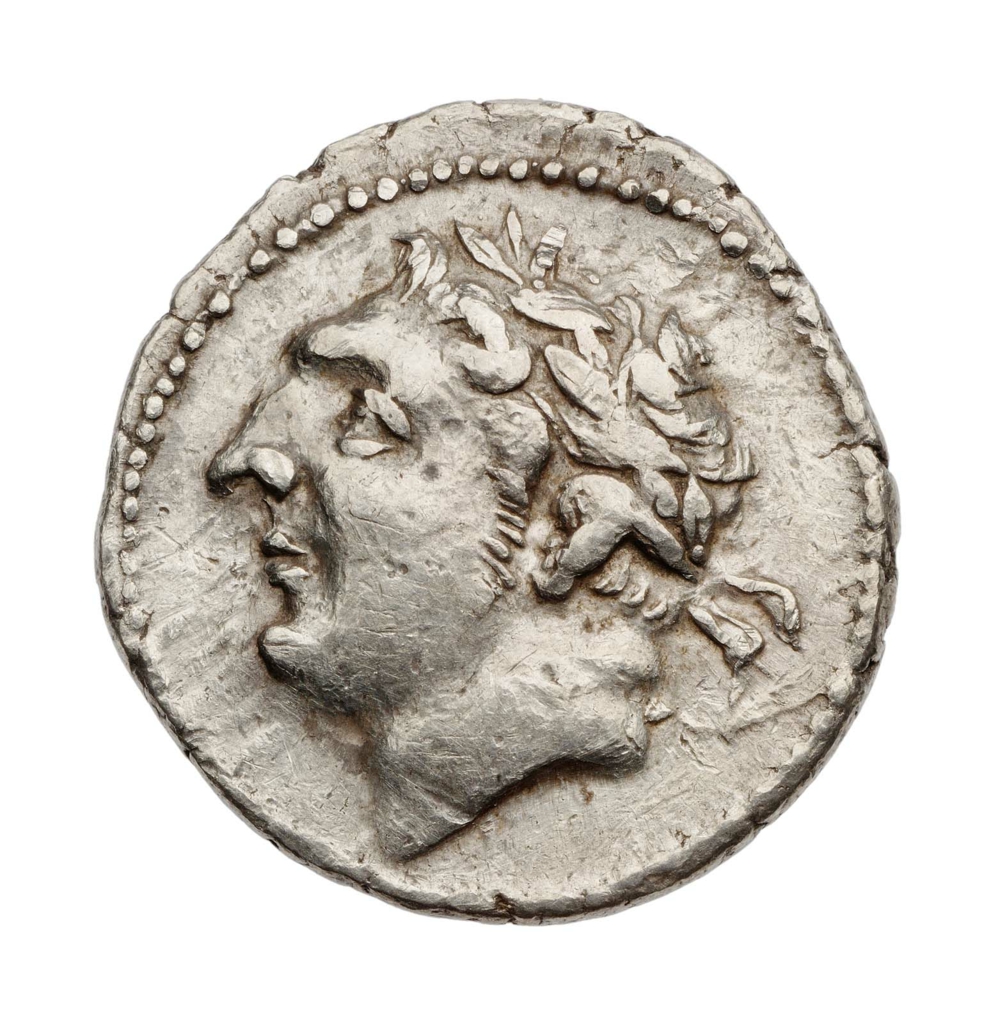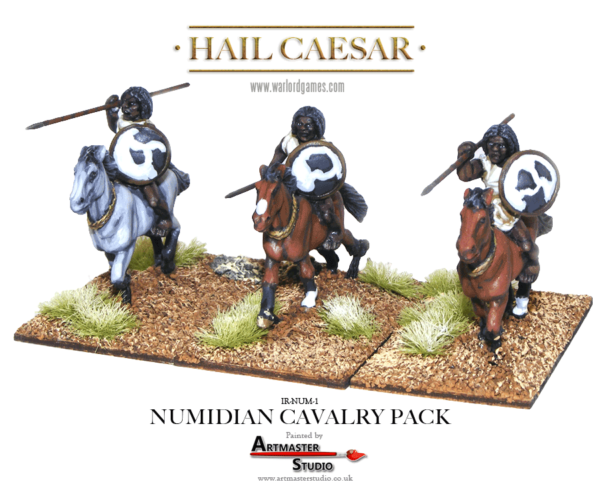These are the best ancient Moorish/Mauretanian cavalry out there.
The figures are dynamic, conveying the impression of fast light cavalry dashing forward to hurl their javelins. The sculpting detail is crisp and there are a good variety of realistic javelin poses (at least based on my dim memories of high school athletics).
With the exception of their horses, which really should be stouter ponies, they are a very faithful depiction of the Moors on Trajan's Column:
You get 12 cavalry in each pack. Each sprue has three different horses, three different rider bodies, three shields, three javelin arms and a generous selection of six heads. Since their Greek sets - which started with a ratio of one head per body - Victrix now provides more heads than bodies in their newest sets. This is a good thing as kitbashing is one of the key appeals of 28mm plastic miniatures.
As you can see from the assembled figures and the section of Trajan's Column above, the heads in the kit are a close match to the style displayed by the Moors, which is something of a corkscrew locks bob.
In order to better represent riders carrying multiple javelins there are two left hands bearing extra missiles. These require you to do a bit of amputation and grafting in order to replace the existing empty left hands sculpted on the rider bodies. This is easily achieved with a scalpel and plastic cement.
Each of the four sprues comes with command options: a Punic-themed standard with a crescent, a horn, an officer's sword arm, and a lovely cloak which is presumably for an 'officer'. These are fairly standard wargame convention.
To my mind they are probably speculative for irregular light cavalry. They could be good fodder for a command stand and the leader bits could make a decent Prince or King, especially with that dashing cloak. That cloak, by the way, fits on a number of other Victrix kits. I dry-fitted one on an Iberian warrior's body and it fit fine.
The detail is so crisp that it is tough to find a metal personality figure that would match as a king. All the alternatives I've looked at are sculpted in a far coarser style.
So, if you are looking for ancient Moorish or Mauretanian cavalry, look no further. This is an affordable and exciting set.
...But are they Numidian?
This set from Victrix is marketed as "Numidian cavalry" and in appearance they fit with a fairly established wargaming convention of what Hannibal's famed Numidian light cavalry look like.
The corkscrew locks hairstyle, reminiscent of cornrows, and the name have often led to sculptors and painters depicting the Numidian cavalry as sub-Saharan Nubian cavalry rather than North African Numidians.
Here's an example of that tendency:
The Numidians, along with the Moors and Gaetulians, were the ancient ancestors of the Berber people, whose name derives from the Latin barbarus, after the Greek for barbarian.
Nowadays, their descendants may style themselves as Amazighe and can, in my personal experience, have blond hair and blue eyes, or look like footballer Zinedine Zidane, who is of Berber descent.
I bet he would have made a cracking cavalryman.
Skin tones are more a matter for the painter than the sculptor, though the manufacturer in this case seems to favour a look slightly south of the Sahara, complete with zebra skins.
 |
| From the Victrix Facebook page |
So what about the hairdos?
Duncan Head's Armies of the Macedonian and Punic Wars (AMPW) is an influential source of information on the look of Numidian cavalry. The first edition of AMPW has a joint listing for the "Numidian or Moorish Cavalryman" which references the depiction of Moors on Trajan's Column and leaves that as a the main clue to what ancient Berber horsemen may have looked like.
In a foreward to the recent republication of AMPW, Head notes that the depiction would be better served by reference to visual evidence provided by vases from Canosa, as discussed in a 1946 article, 'Numidian Horsemen on Canosa Vases' by M. Rostovtzeff in the American Journal of Archaeology (Vol. 50, No. 2 (Apr. - Jun., 1946), pp. 263-267; you can view this for free here by registering with JSTOR).
Peter Connolly was aware of the Canosa Vase depictions, and even features a photograph of one in his Greece and Rome at War, but, in comparison to Head, Connolly goes on to make a less cautious extrapolation from the Moors on Trajan's Column to the Numidians of Hannibal.
 |
| Numidian horseman, from a Canosa Vase terracotta, 3rd Century BC, the Louvre. |
Rostovtzeff bases his claim on comparing the similarities between the Canosa Vases and the images of Numidian kings on coins. Allen Curtis took a similar approach in several discussions on TMP, though he did not cite Rostovtzeff's article and may have been unaware of it.
Rostovtzeff goes through three different (North) African styles of hair and beard: the Numidian, the Libyan and the Mauretanian ala Trajan's Column. He also cites literary evidence from Strabo and Livy to back this up.
Here are some kings of Numidia:
 |
| Massinissa |
Massinissa is the most relevant king for our period (ruled 206 BC - 148 BC). Note the hair is curled, but not in corkscrew locks.
 |
| Micipsa, son of Massinissa |
 |
| Adherbal, son of Micipsa |
 |
| Jugurtha |
It doesn't display any sculptor's marks suggestive of corkscrew lock hair let alone cornrows. The beard and hair are overall comparable to those of the kings above. I would say they are of a broadly Hellenic style. Rostovtzeff points out a sharply pointed beard as well.
The only Numidian king who resembles the wargamer's Moorish Numidian is Juba I, who ruled at a much later period, 60-46 BC. Juba II was later king of both Numidia and Mauretania.
 |
| Juba |
It surprises me to say this, but the heads from the Wargames Factory Numidian Cavalry are a better historical match. Wargames Factory got a fair bit of flack for ahistorical depictions with some of their models, but their Numidian hairstyles are a fairly close match to the available historical evidence. Unfortunately, their line is currently unavailable since their acquisition by Warlord. With Warlord's existing Nubian cavalry it's not clear if the plastic Numidians will survive.
 |
| Sample Wargames Factory Numidian from An Hour of Wolves site. |
Victrix is also producing a set of Numidian infantry with the same hairdos. The Carthaginians may have used some Moorish infantry. AMPW mentions this, though I'm not sure what the original source is. Anyone know?
The Horses
The Numidian pony was a stouter breed than the horses that come with the Victrix kit. AMPW has a good write up on the specifics.
I suspect the reason for the different look is economic.
Victrix is in the process of rolling out several plastic horse kits, which include Iberians and Macedonians/Greeks. The horses for all sets are quite obviously based on the same model skeleton and have exactly the same poses (the same goes for some of the riders). The horses differ in terms of tack and bridling. The 'Numidian' horses come with the historically attested rope around the neck, used to choke the windpipe while the rider steered with a stick.
However, the poses are dynamic and exciting, so this is not a big loss. I can't begrudge the manufacturer some limited sculpts if it translates to lower prices. I suspect the cost is tied more to design costs rather than tooling and casting.
I do have to add that two out of the three horse bodies are rather prone to breakage in shipping due to very narrow joints and the lack of box packaging (they come in a ziplock bag). Several of my horses were received had the hooves snapped from their bases, though Caliver Books were kind enough to throw in a free miniature pack in my next order.
If the manufacturer or any retailers read this, I highly recommend some bubble wrap around these packs.
 |
| Arrows show points of breakage |
- Dynamic poses
- Ample choice of heads
- Lots of command bits that can be used for other models; the standard may look better on some Carthaginian citizen cavalry
- Minimal mould lines
- Crisp detail
Misses
- The hairstyles are actually Moorish/Mauretanian, possibly of a later period than the Punic Wars.
- The steeds aren't Numidian ponies, but some larger breed of horse
Looks aside, they will kill Romans just the same on the tabletop and hairdos aren't that striking from 'tabletop distance'. More will rest on the paint job which should include light skin tones, and some red on their goatskin tunics (see the new edition of AMPW for more).
DELENDA EST ROMA!
POSTSCRIPT - Relating to some comments on TMP about whether the Moors' tunics may have been Romanised, here are some shots of the terracotta sculptures mentioned above from Rostovtzeff's article. The first figure is the one from Connolly. You can see a short-sleeved, ungirded tunic with fringing. What may be a baldric crosses the torso. Duncan Head says there were traces of red found on it.
Presumably they may look similar to common depictions of Libyan skirmishers. A cloak is visible on the second figure from the Victoria & Albert Museum, as well as on some coins of Syphax, Massinissa's rival.








I actually have a set of Numibian infantry from Wargames factory, too bad I mess them up and made them into Roman Roraii and Archers
ReplyDeleteGreat and that i have a swell offer you: Who Does Renovations brick bungalow exterior makeover
ReplyDelete